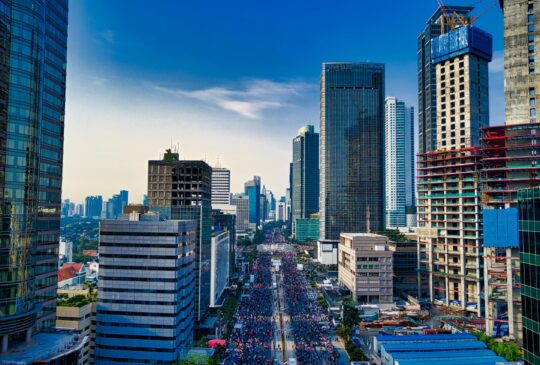Indonesia
Overview of Indonesia
1. Geography
- Capital: Jakarta
- Area: Approximately 1.9 million square kilometers (735,000 square miles), making it the 14th largest country in the world.
- Islands: Indonesia consists of over 17,000 islands, with the five largest being Sumatra, Java, Borneo (Kalimantan), Sulawesi, and New Guinea (Papua).
- Landscape: The country features a diverse landscape, including mountains, volcanoes, rainforests, and beaches.
2. Political Structure
- Indonesia is a unitary presidential republic, with a president serving as both the head of state and head of government.
- The country is divided into 34 provinces, each with its own local government.
3. Economy
- Indonesia has the largest economy in Southeast Asia and is classified as an emerging market and developing economy.
- Key sectors include agriculture, manufacturing, mining, and tourism.
- Major exports include palm oil, coal, rubber, textiles, and electronics.
4. Culture
- Indonesia is known for its rich cultural diversity, with over 300 ethnic groups and more than 700 languages spoken.
- The country has a variety of cultural traditions, including music, dance, art, and cuisine, influenced by its history and geography.
- The predominant religion is Islam, with a significant number of Christians, Hindus, and Buddhists.
5. Tourism
- Indonesia is a popular tourist destination, known for its natural beauty, cultural heritage, and biodiversity.
- Bali is the most famous tourist destination, known for its beaches, rice terraces, and vibrant culture.
- Other notable destinations include Yogyakarta, Komodo Island, Raja Ampat, and Borobudur Temple.
6. Transportation
- Indonesia has a developing transportation infrastructure, with a mix of road, rail, air, and sea transport.
- Major airports include Soekarno-Hatta International Airport in Jakarta and Ngurah Rai International Airport in Bali.
- Ferries are commonly used to connect the many islands.
7. Climate
- Indonesia has a tropical climate, characterized by high humidity and temperatures averaging 25-30°C (77-86°F) year-round.
- The country experiences two main seasons: the wet season (November to March) and the dry season (April to October).
8. Education and Healthcare
- Indonesia has made significant progress in education, with a growing number of schools and universities.
- The healthcare system includes both public and private services, though access can vary significantly between urban and rural areas.
Conclusion
Indonesia is a vibrant and diverse country with a rich cultural heritage and stunning natural landscapes. Its unique blend of traditions, languages, and religions makes it a fascinating destination for travelers and a significant player in the Southeast Asian region. If you have specific questions or need more information about a particular aspect of Indonesia, feel free to ask!


